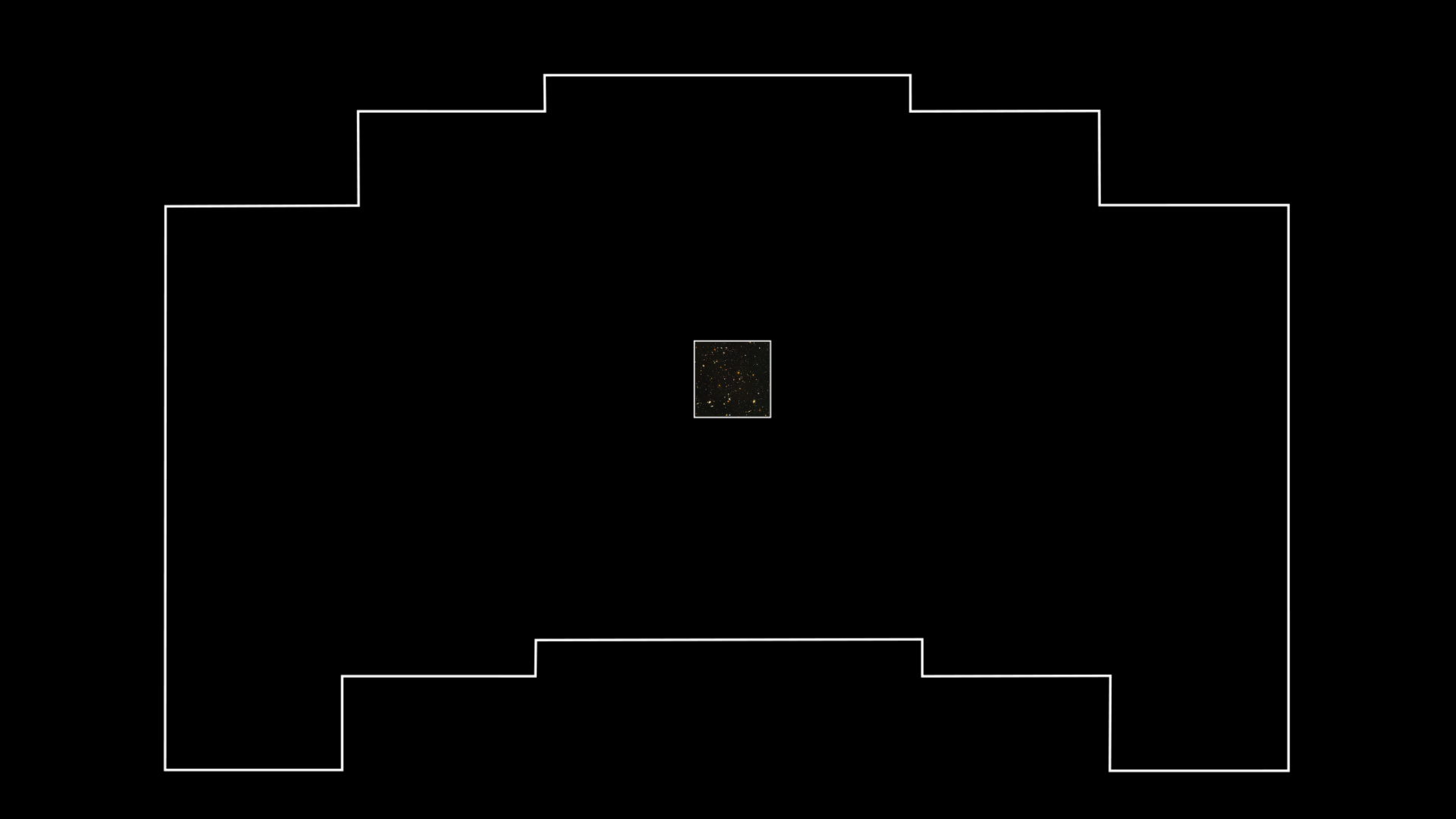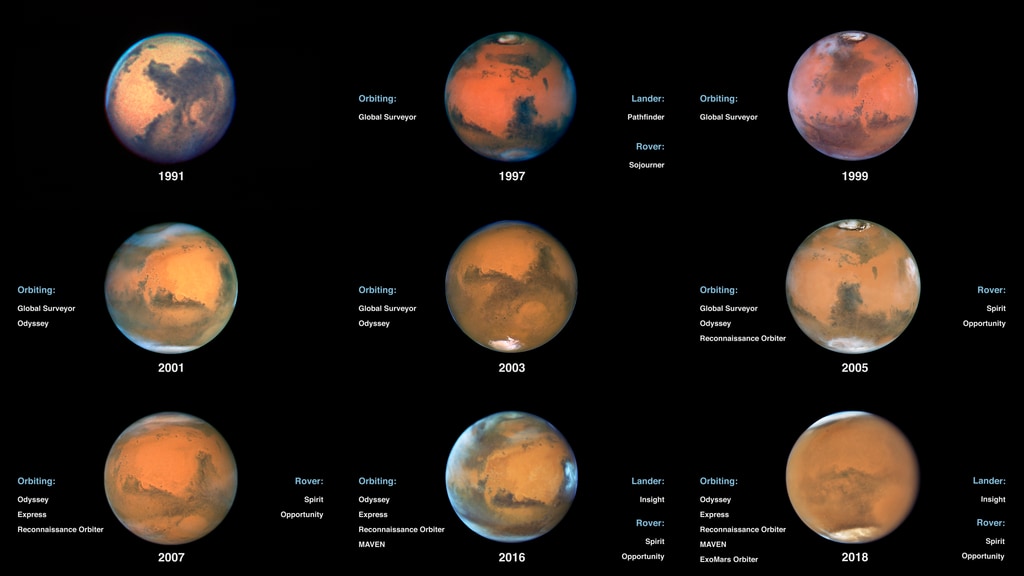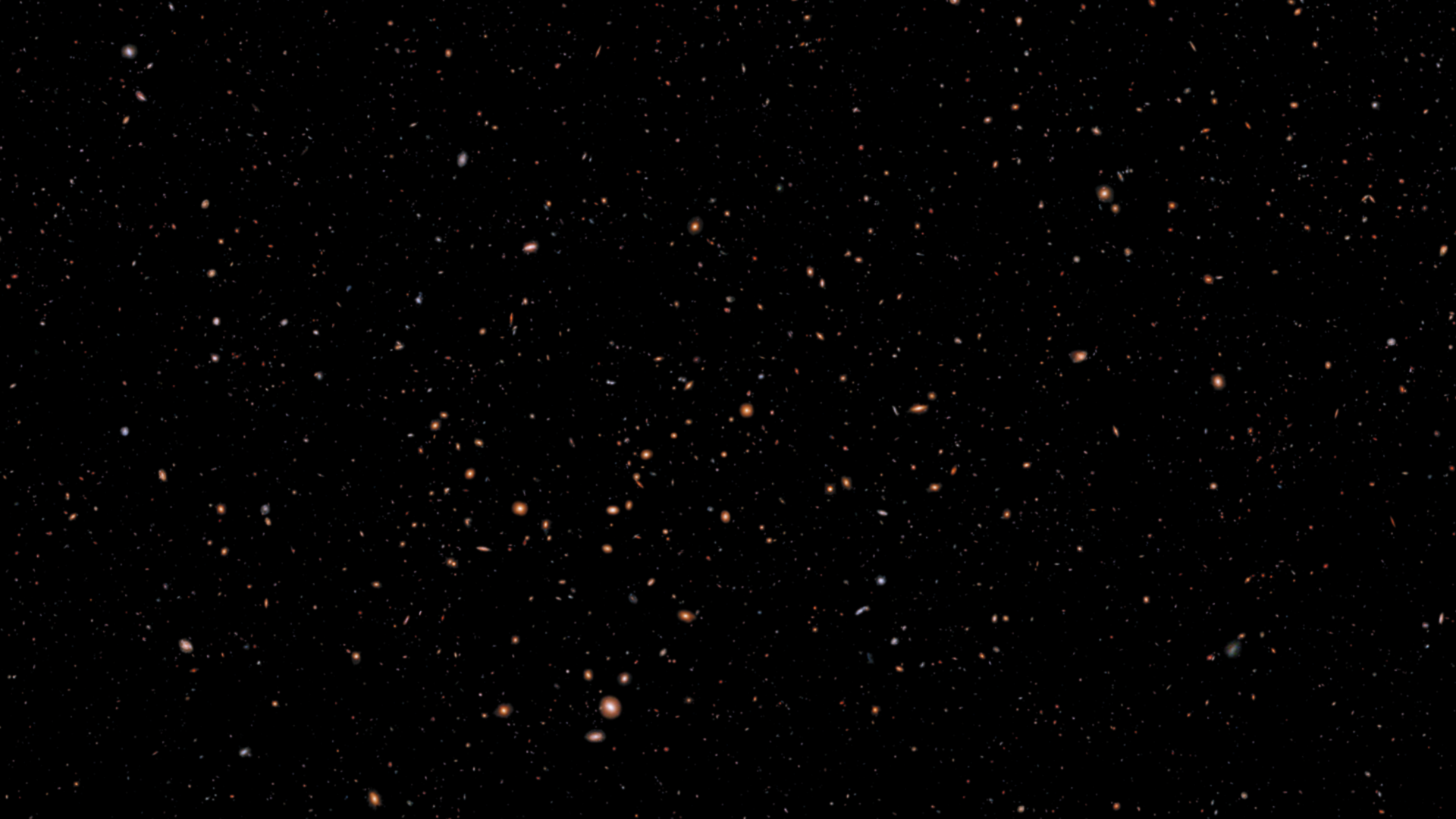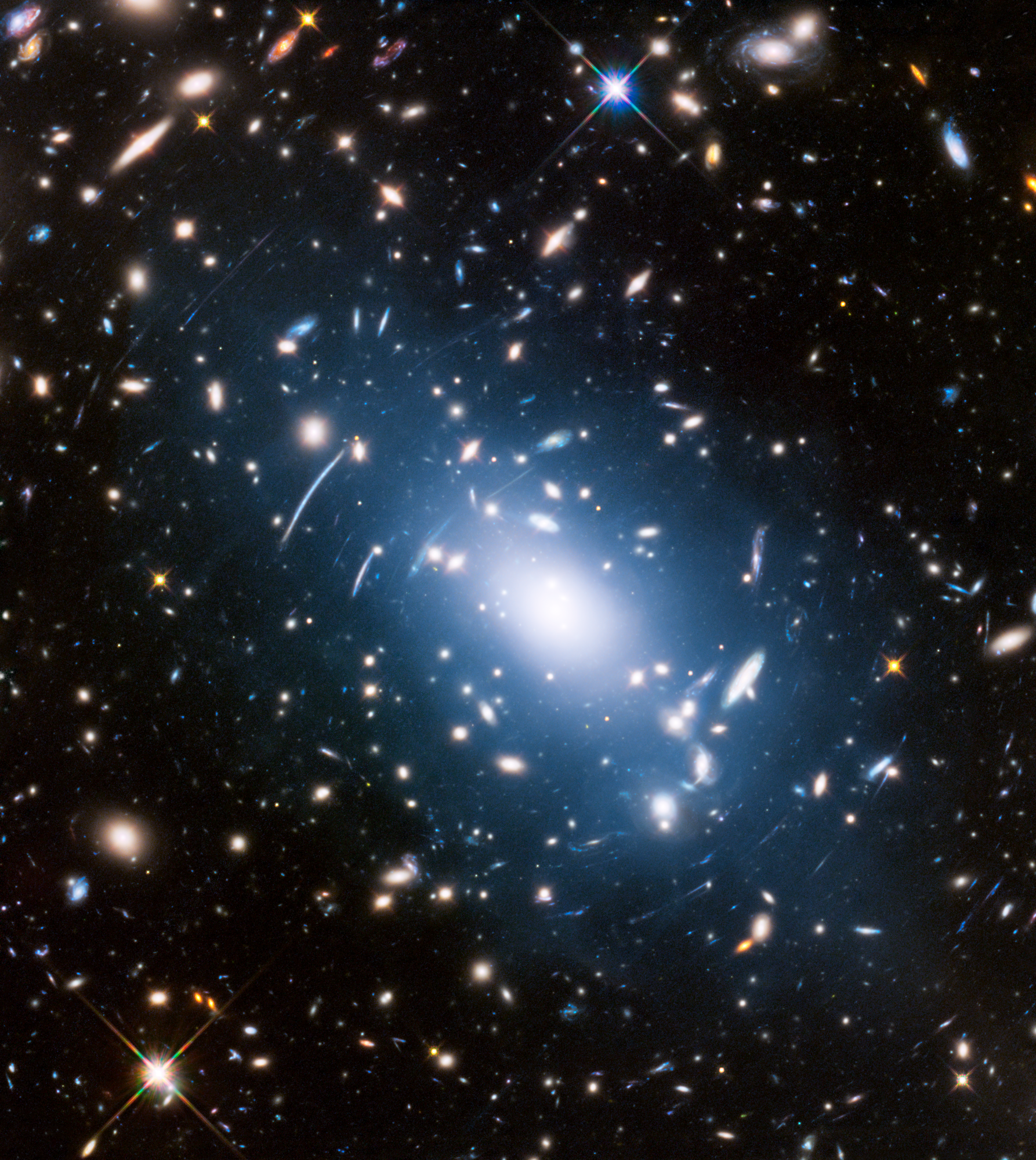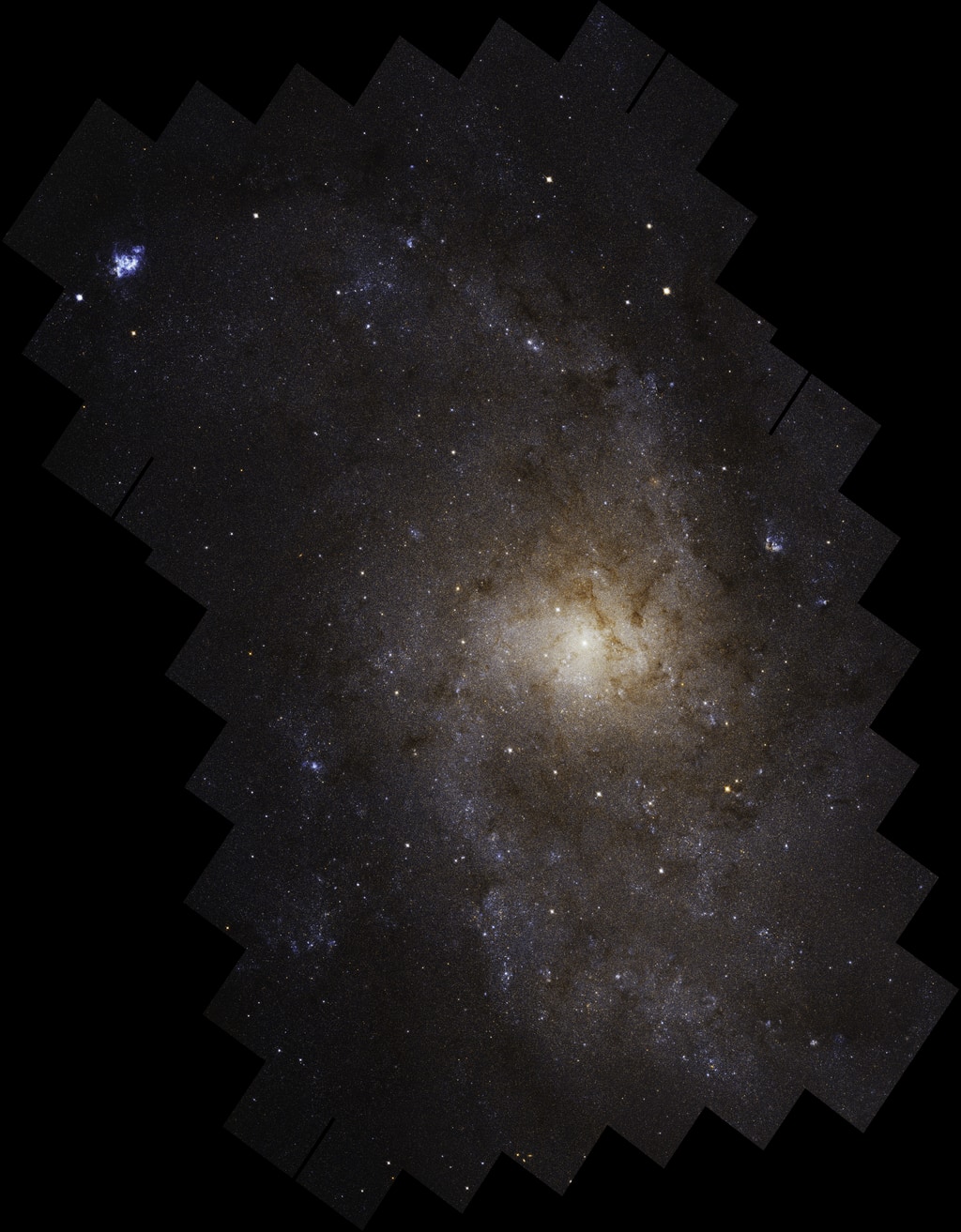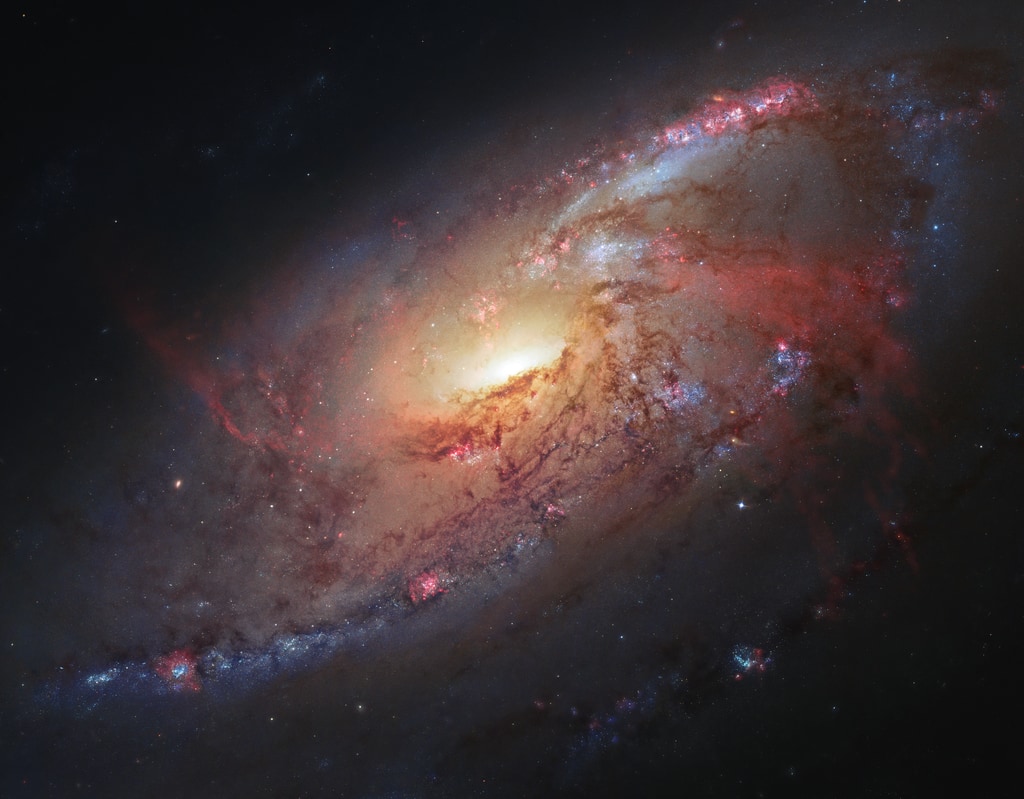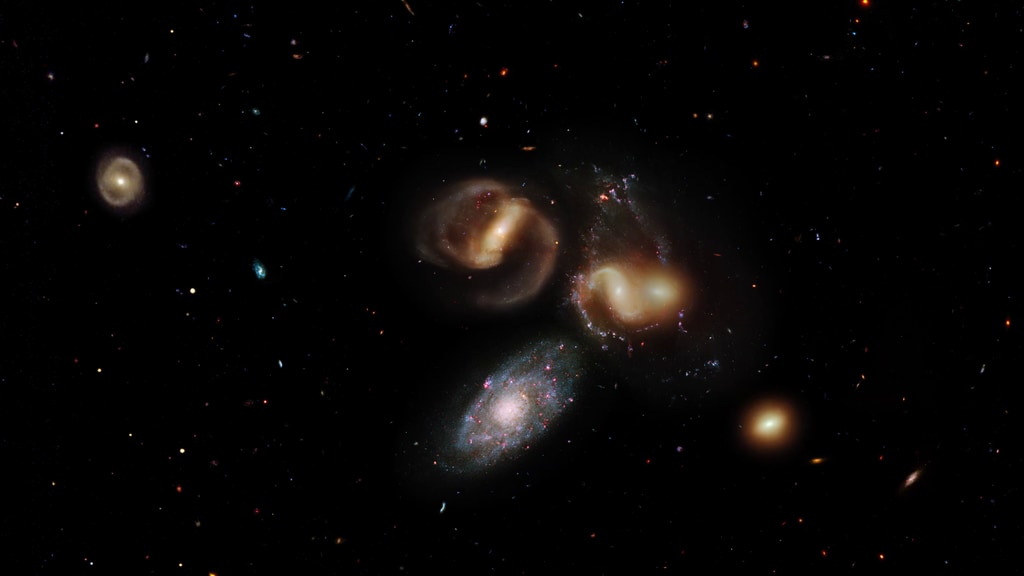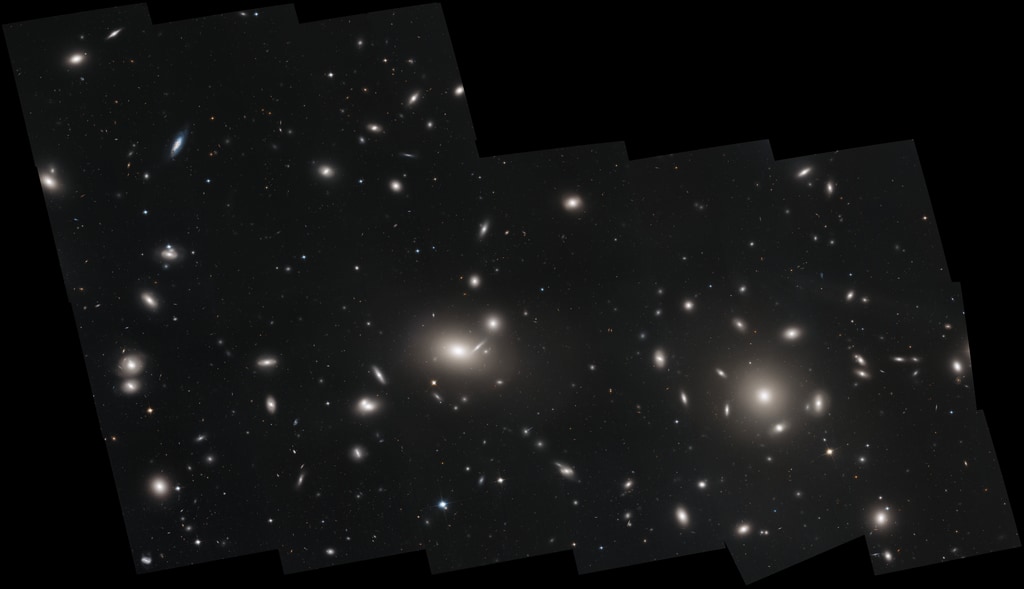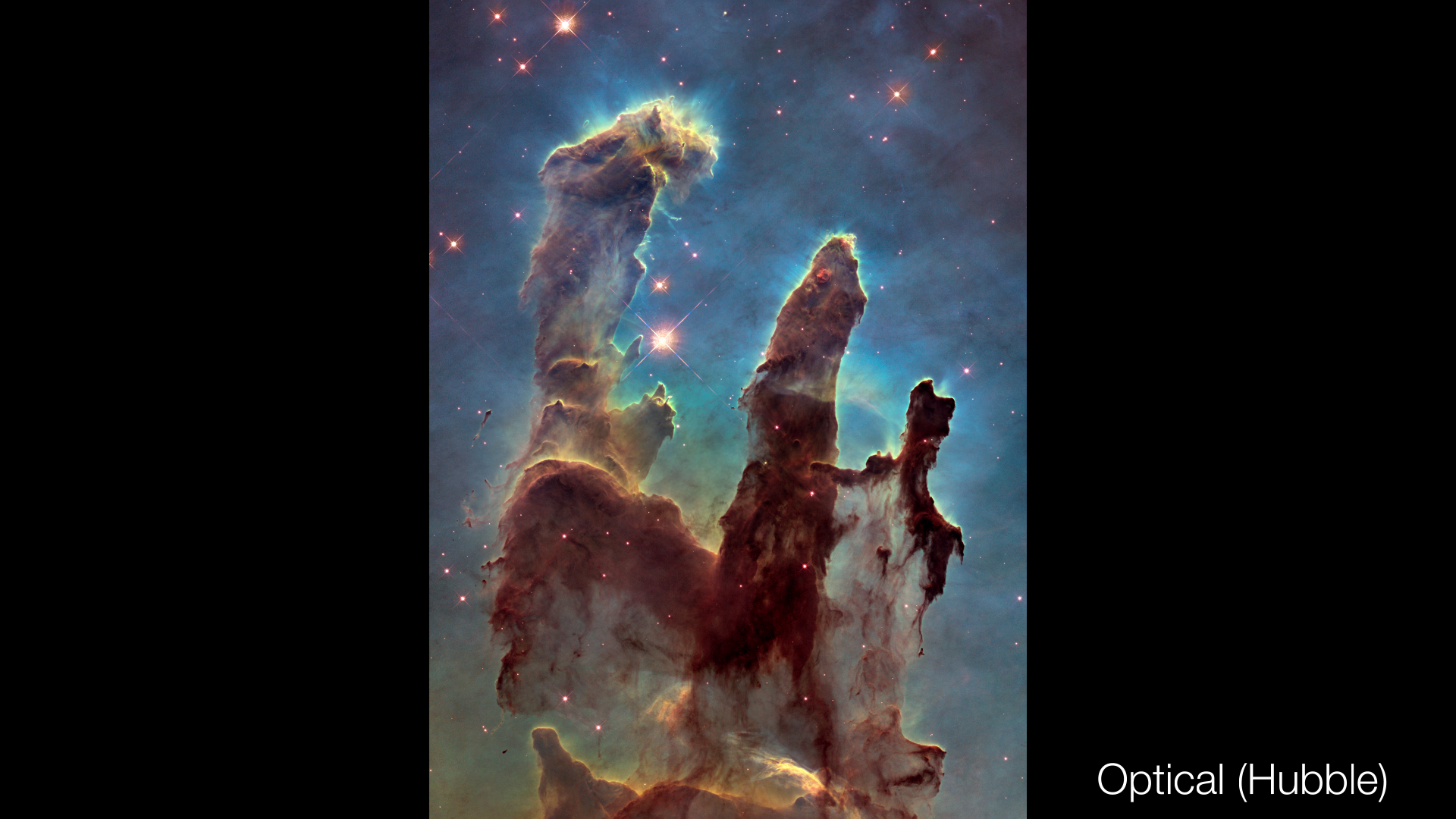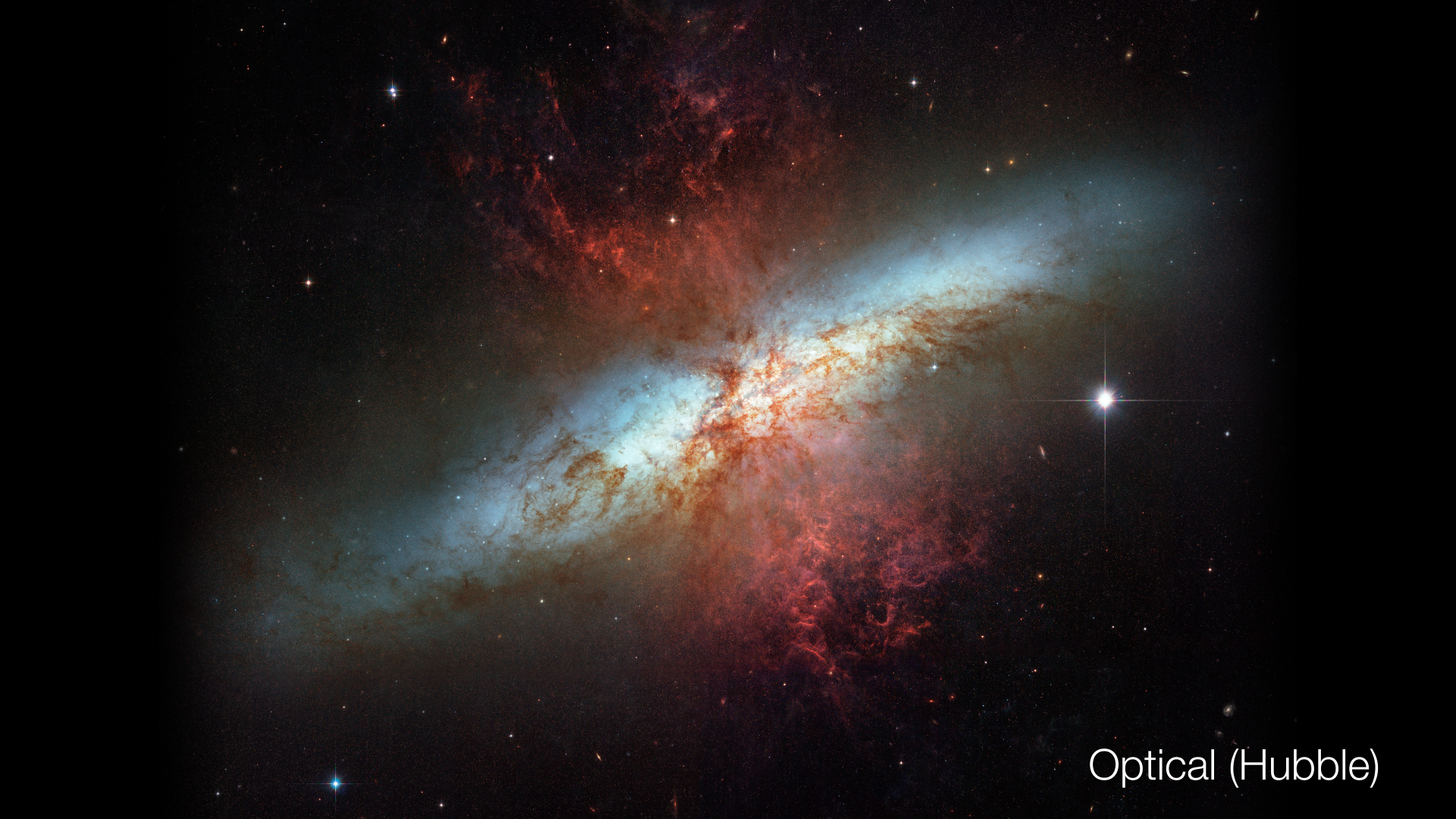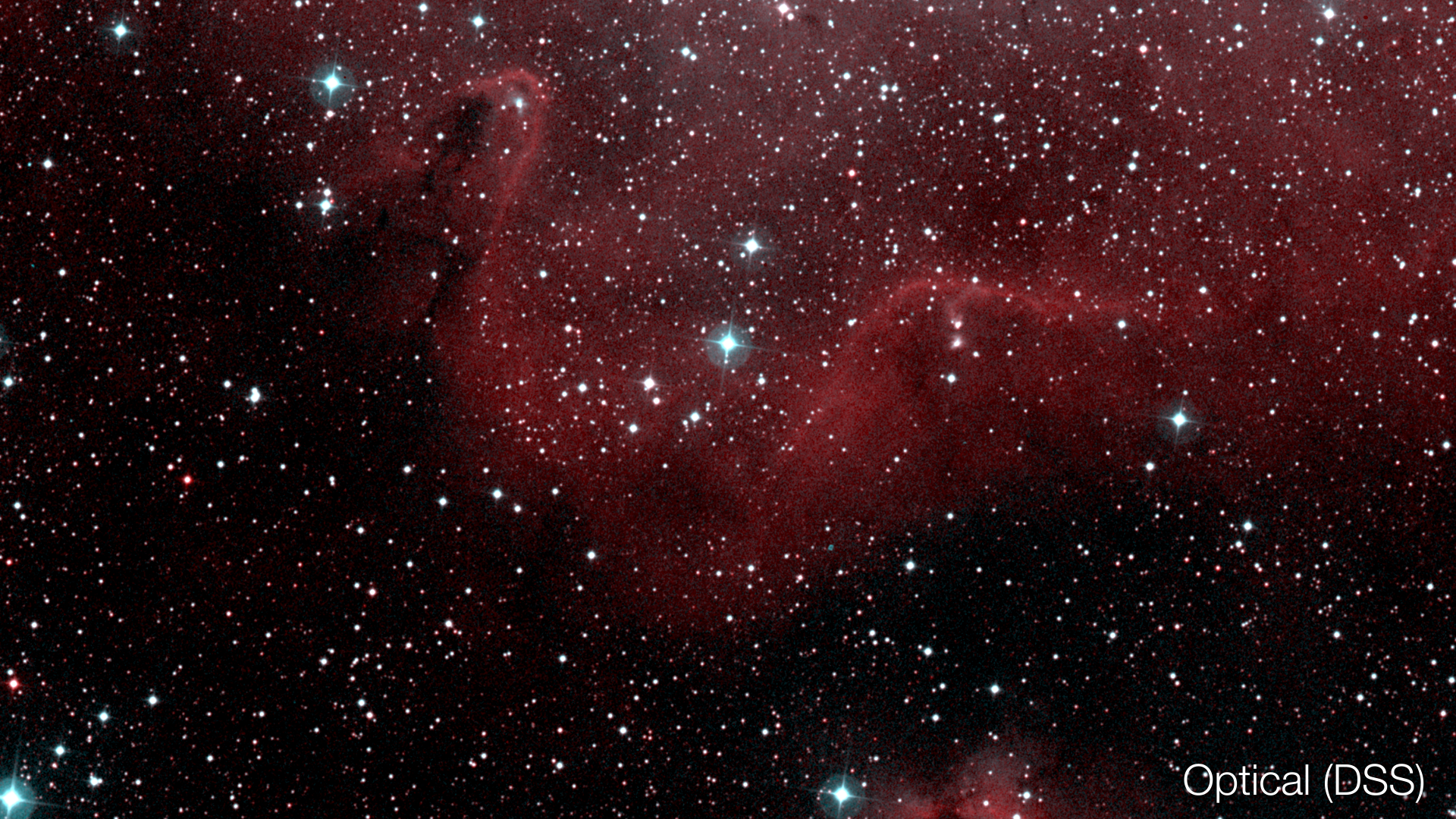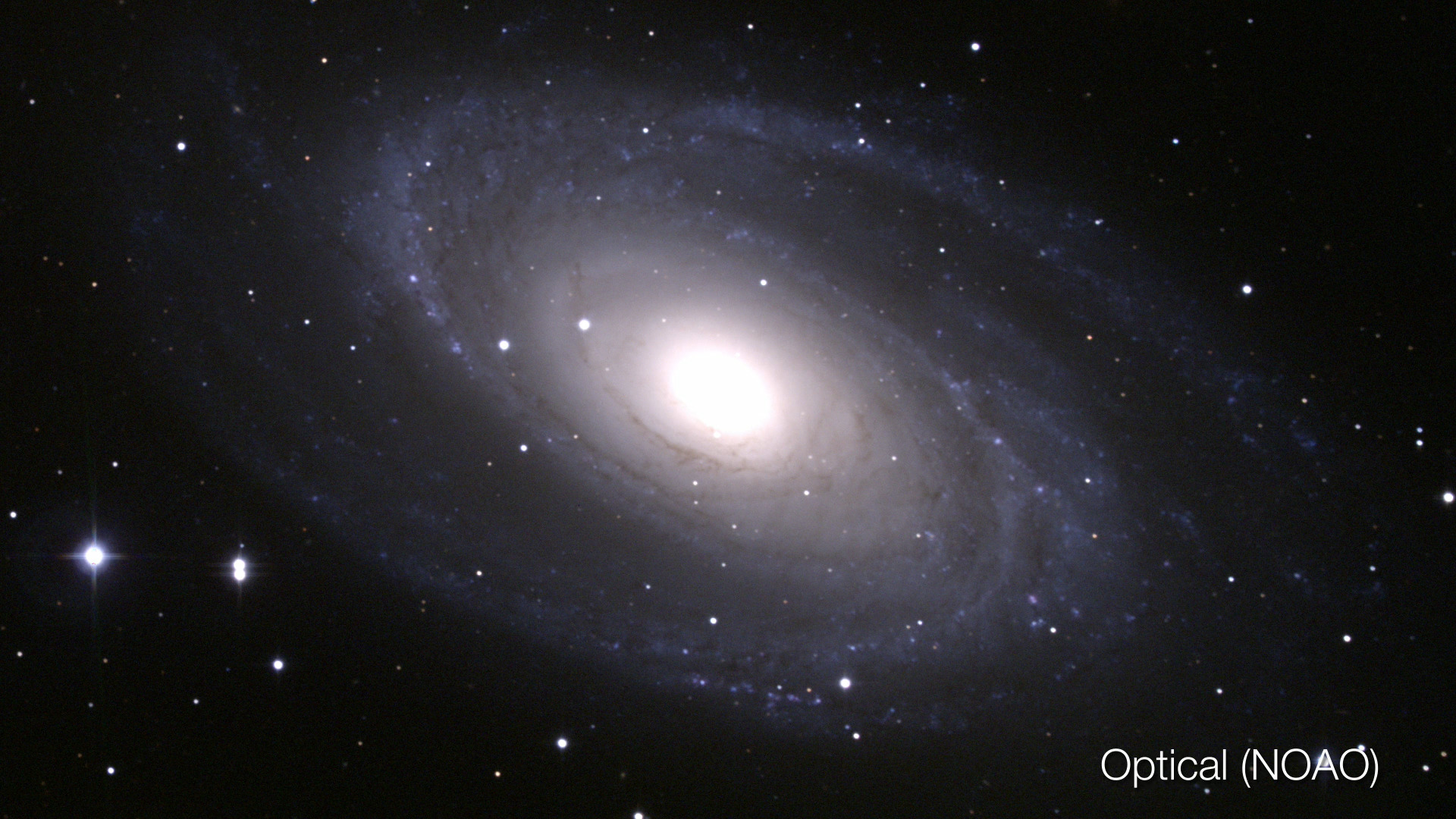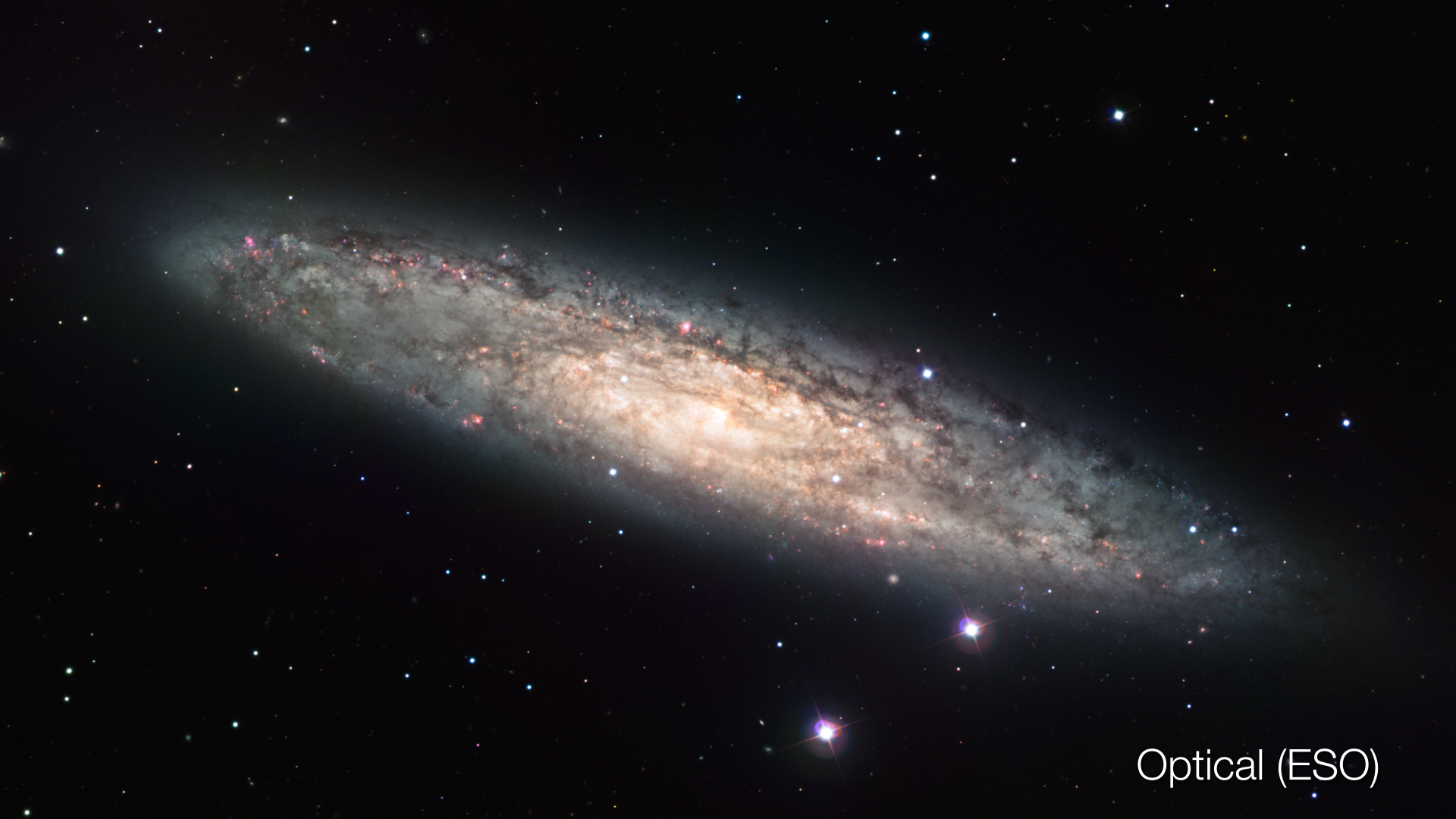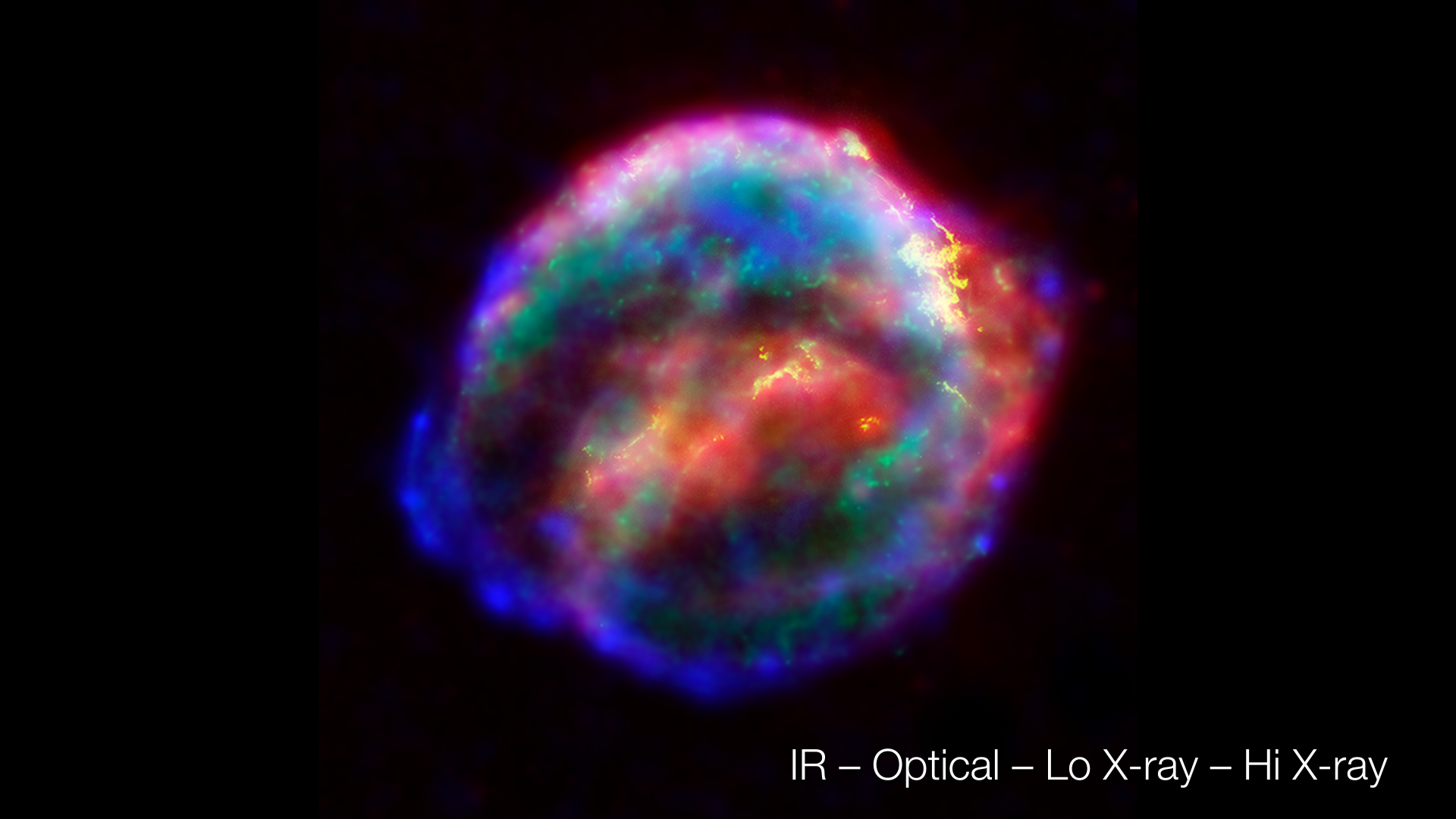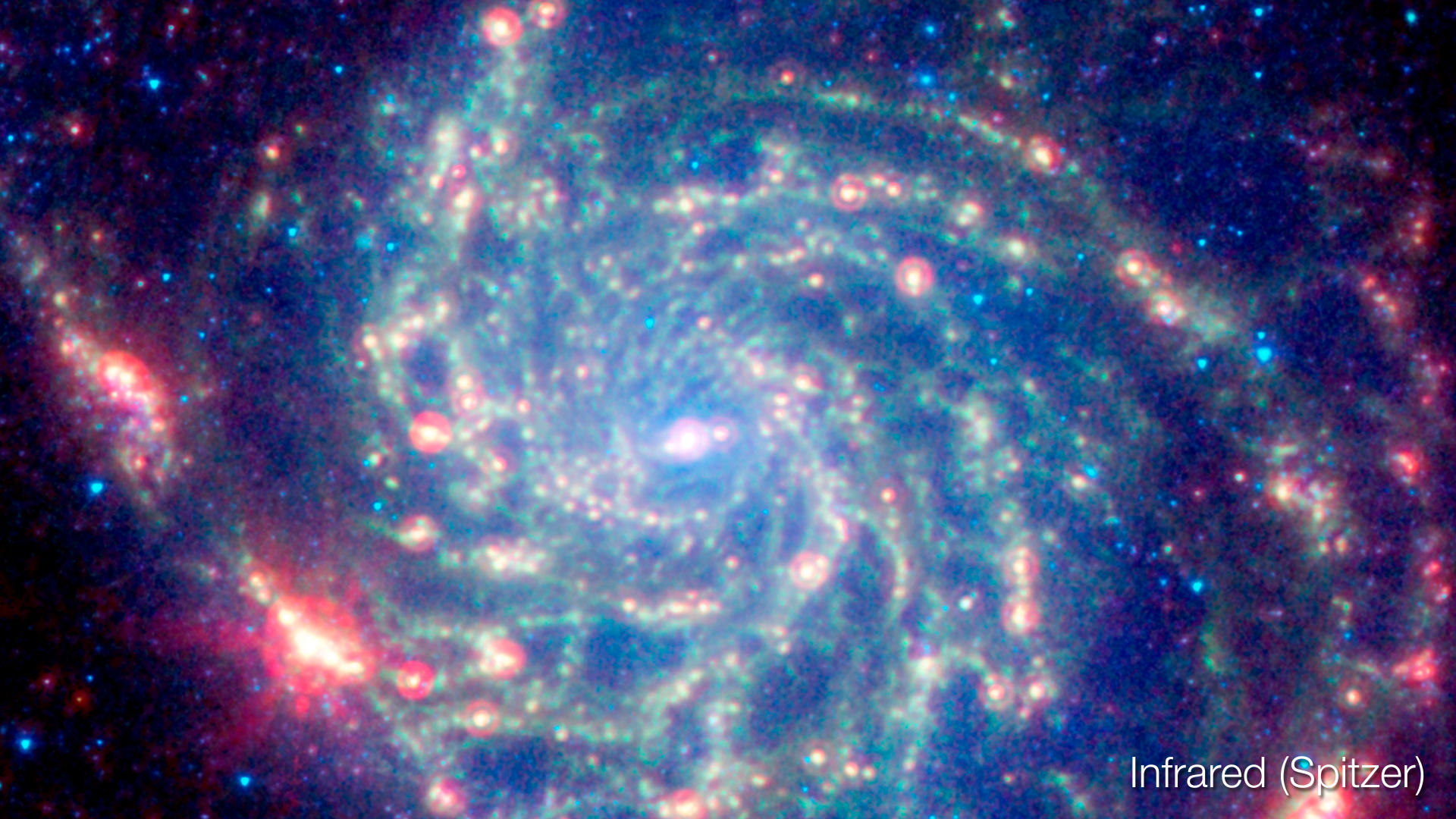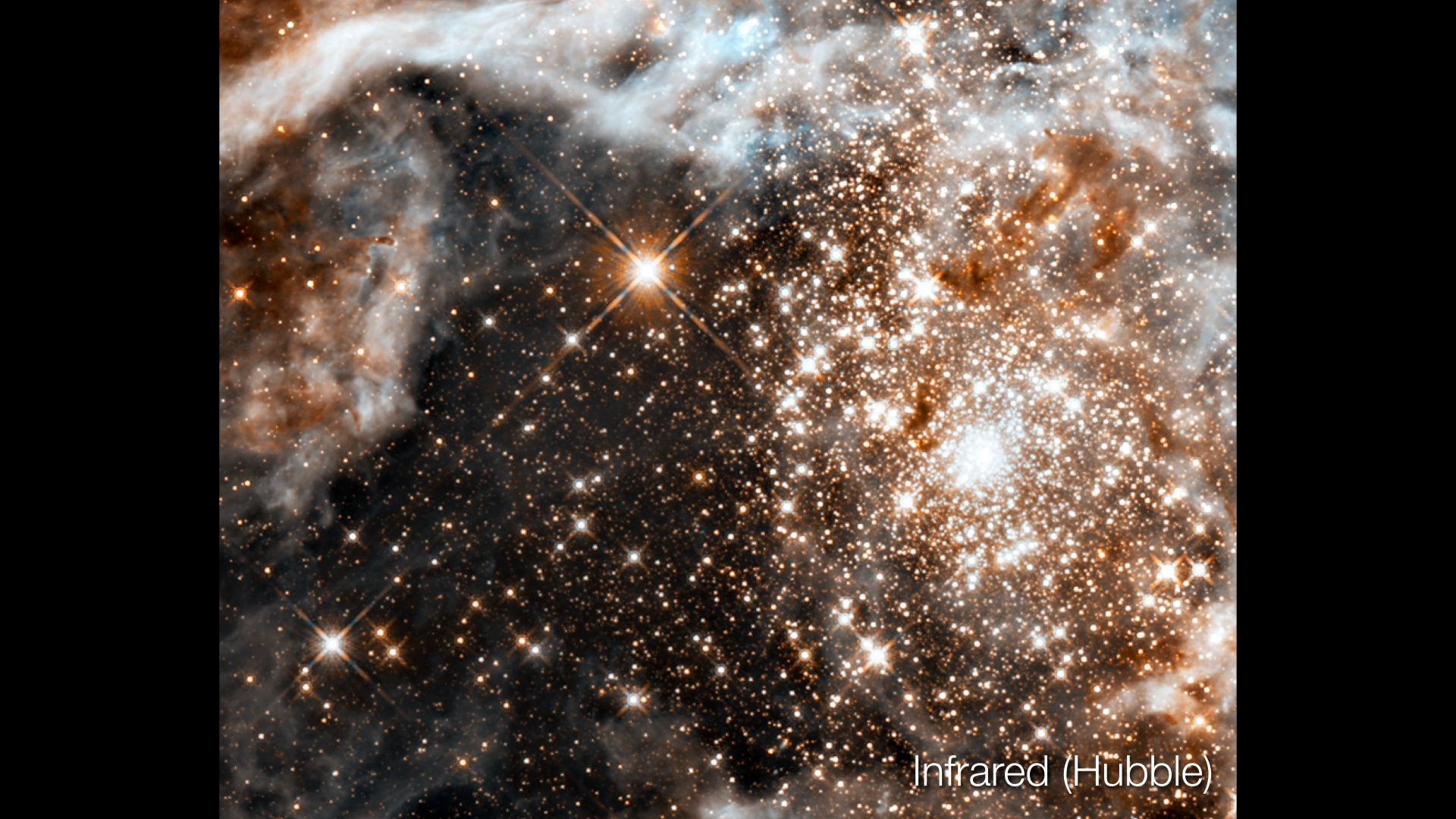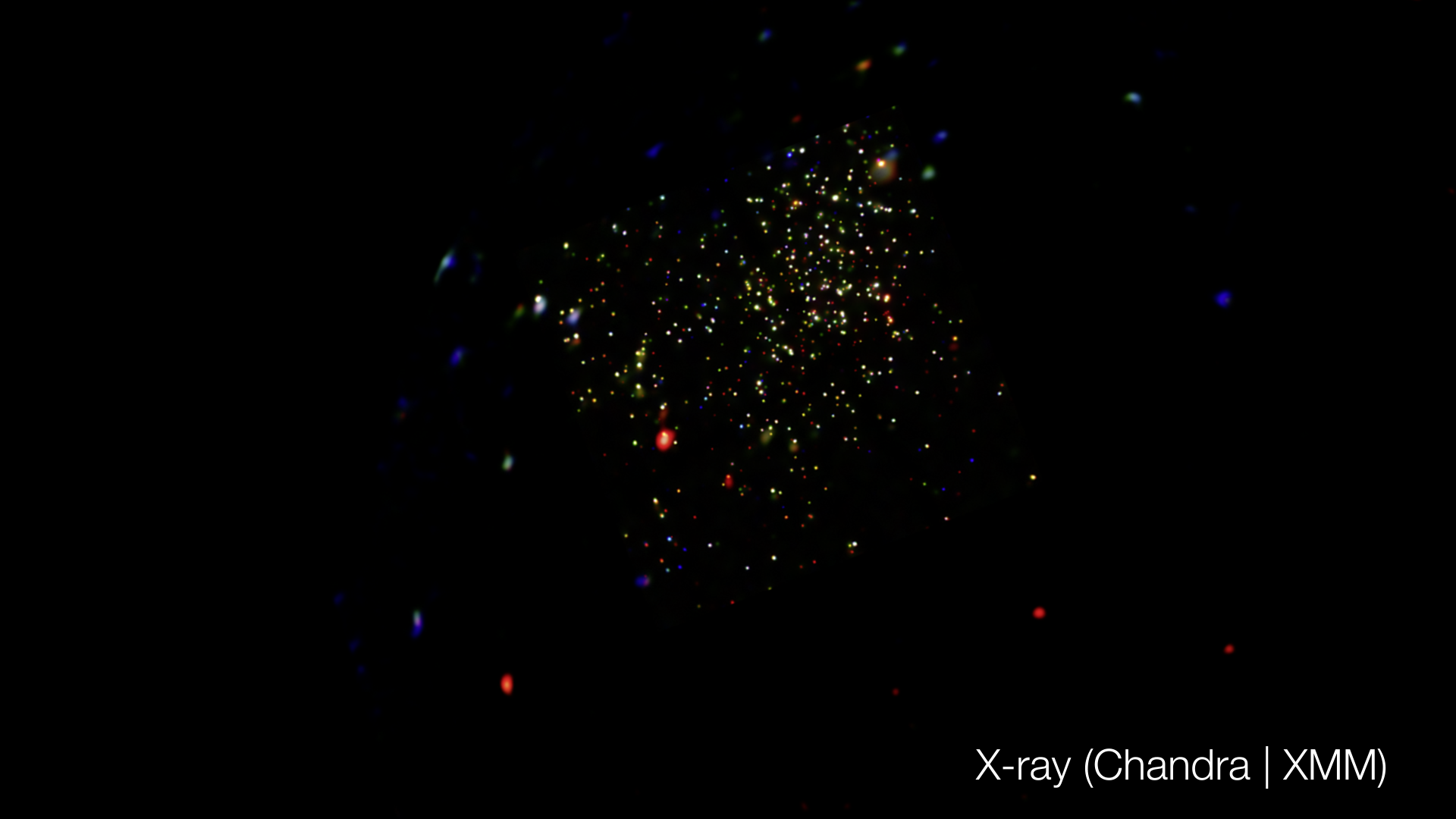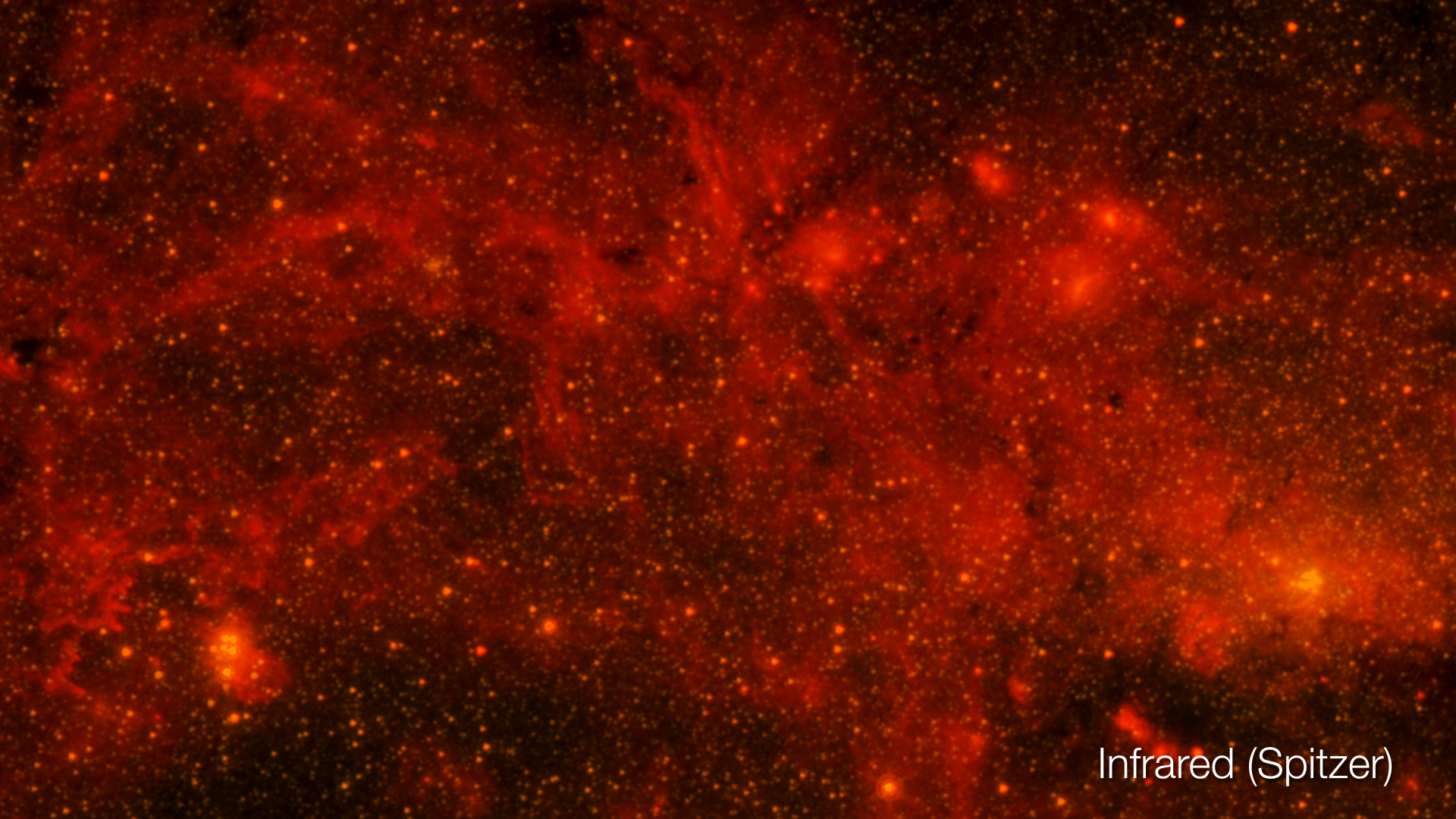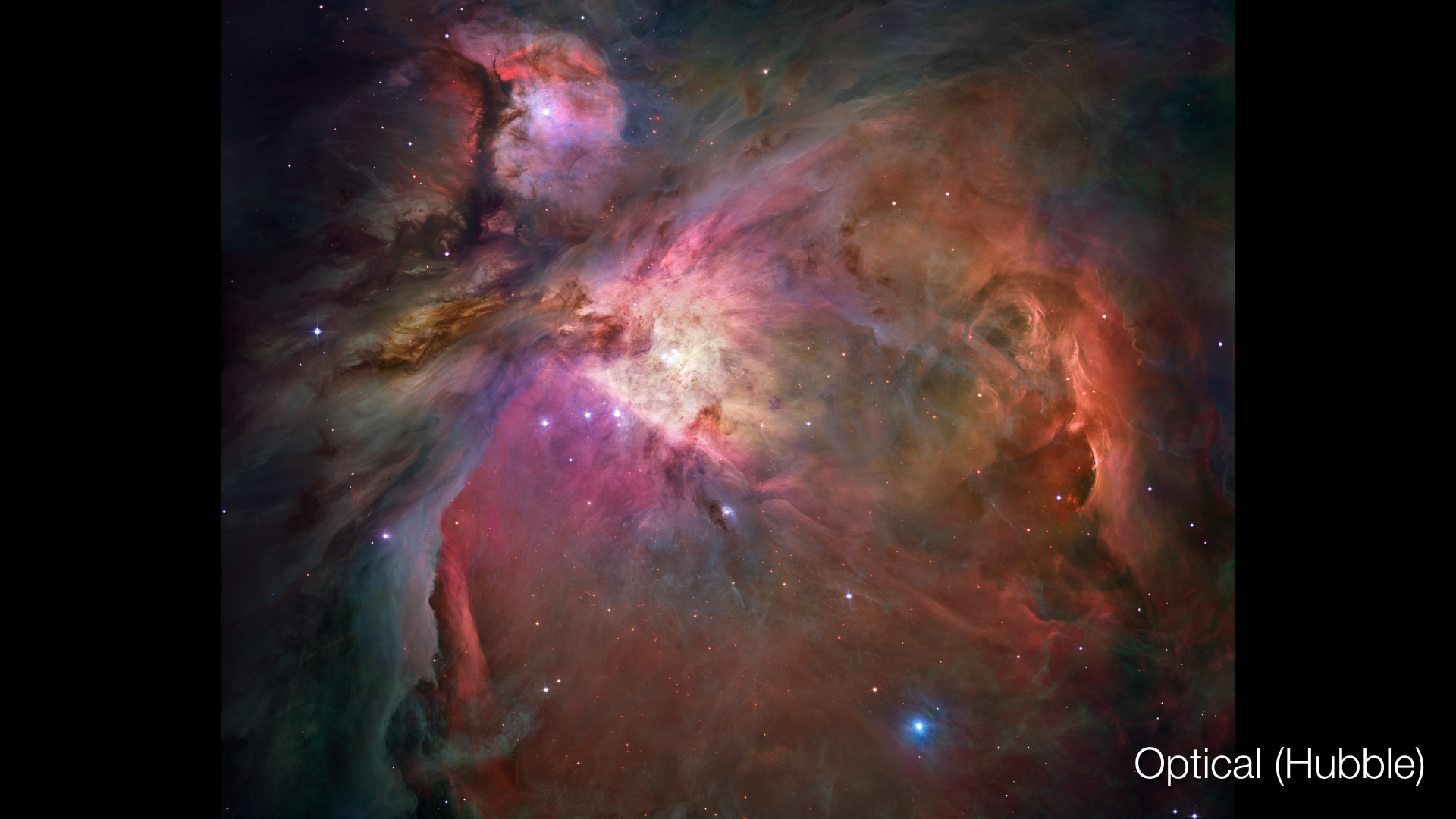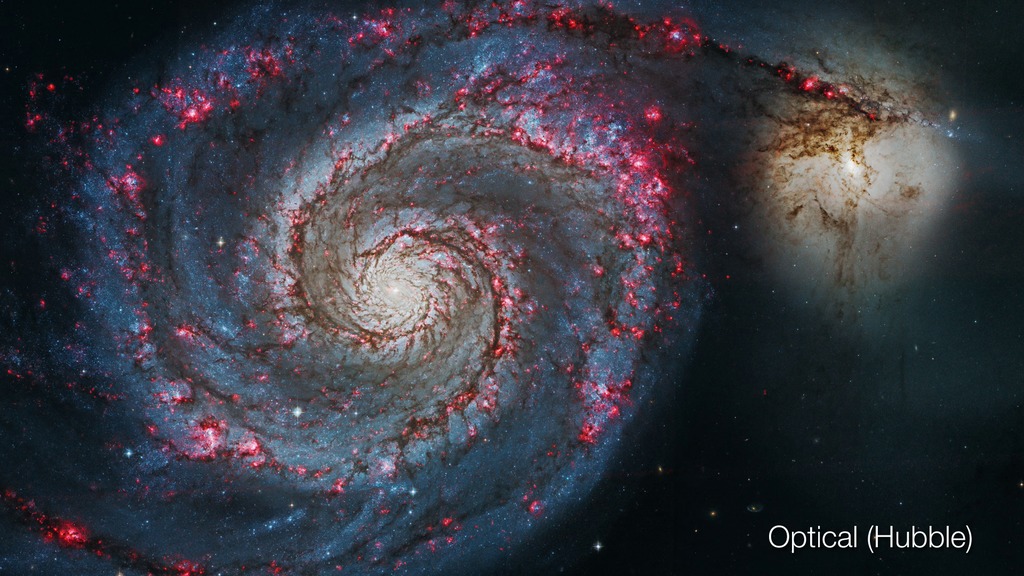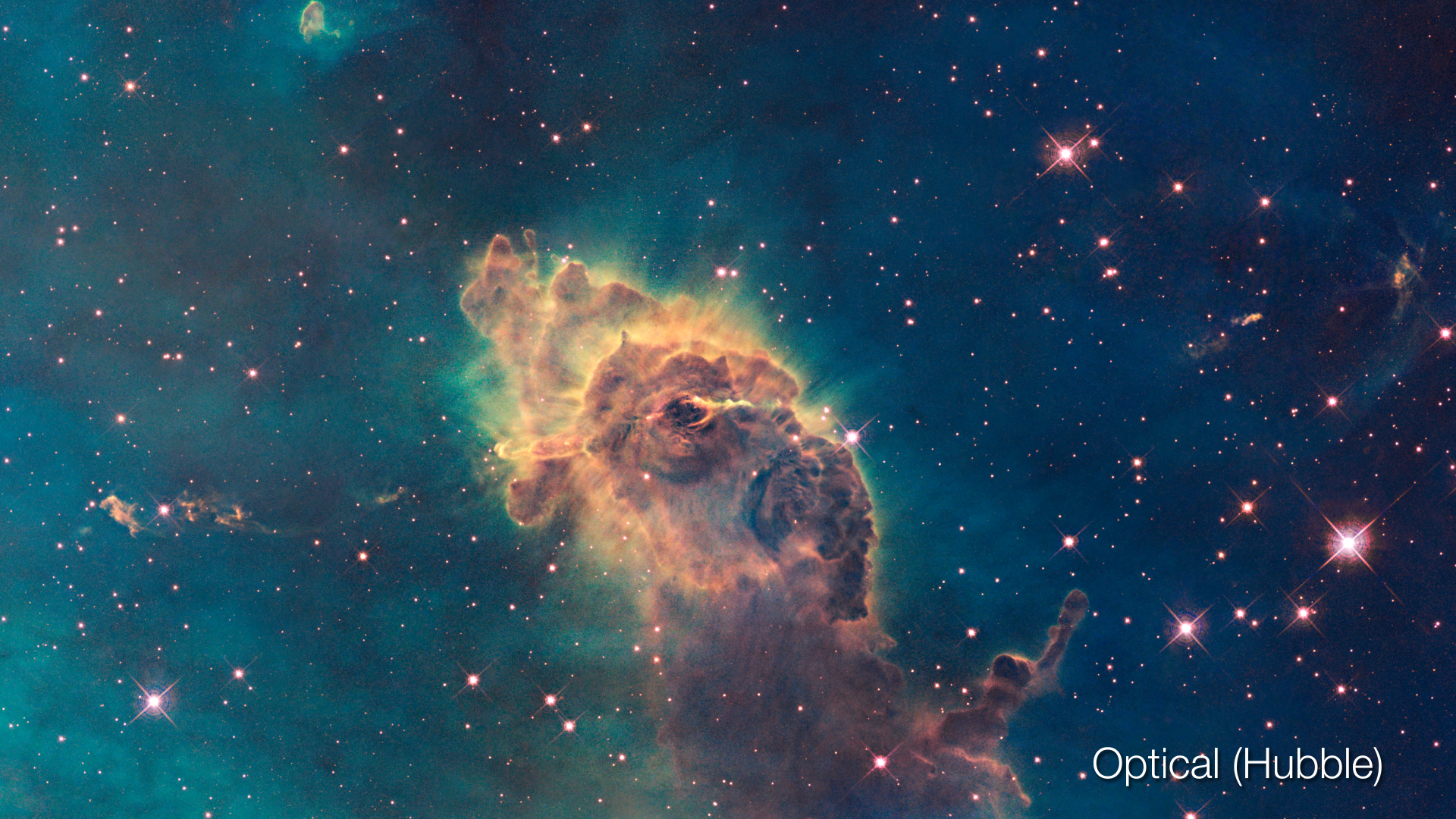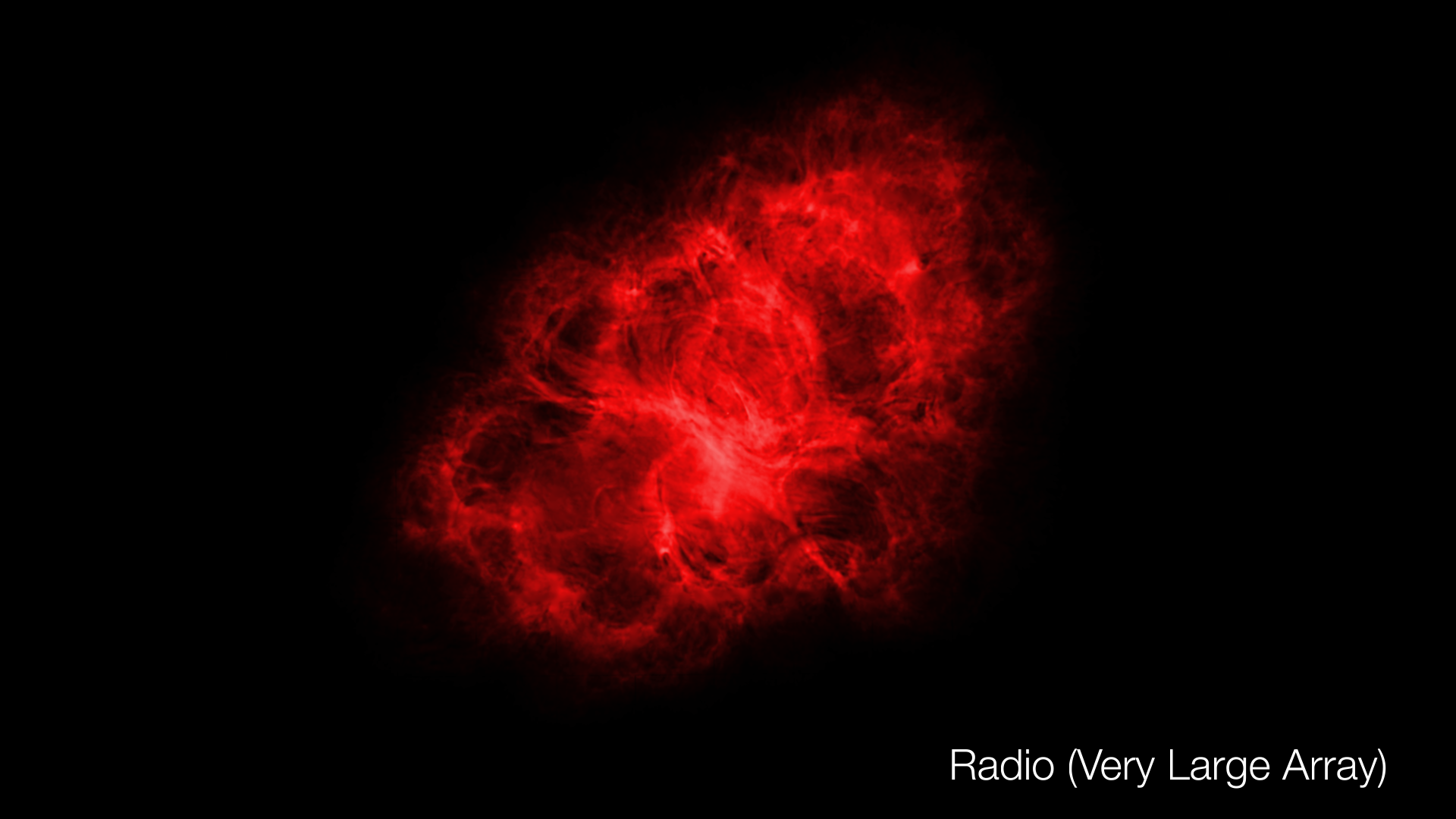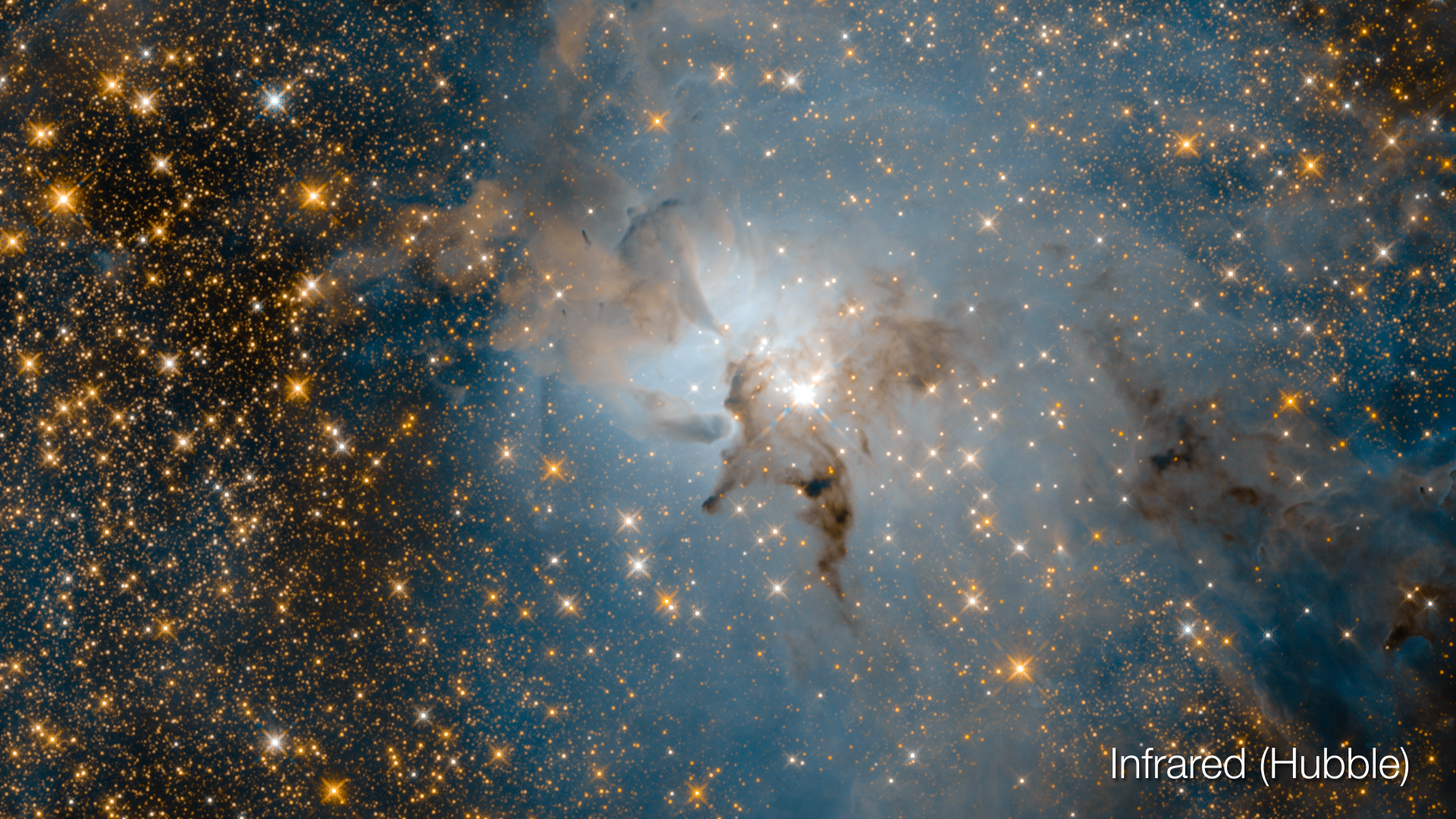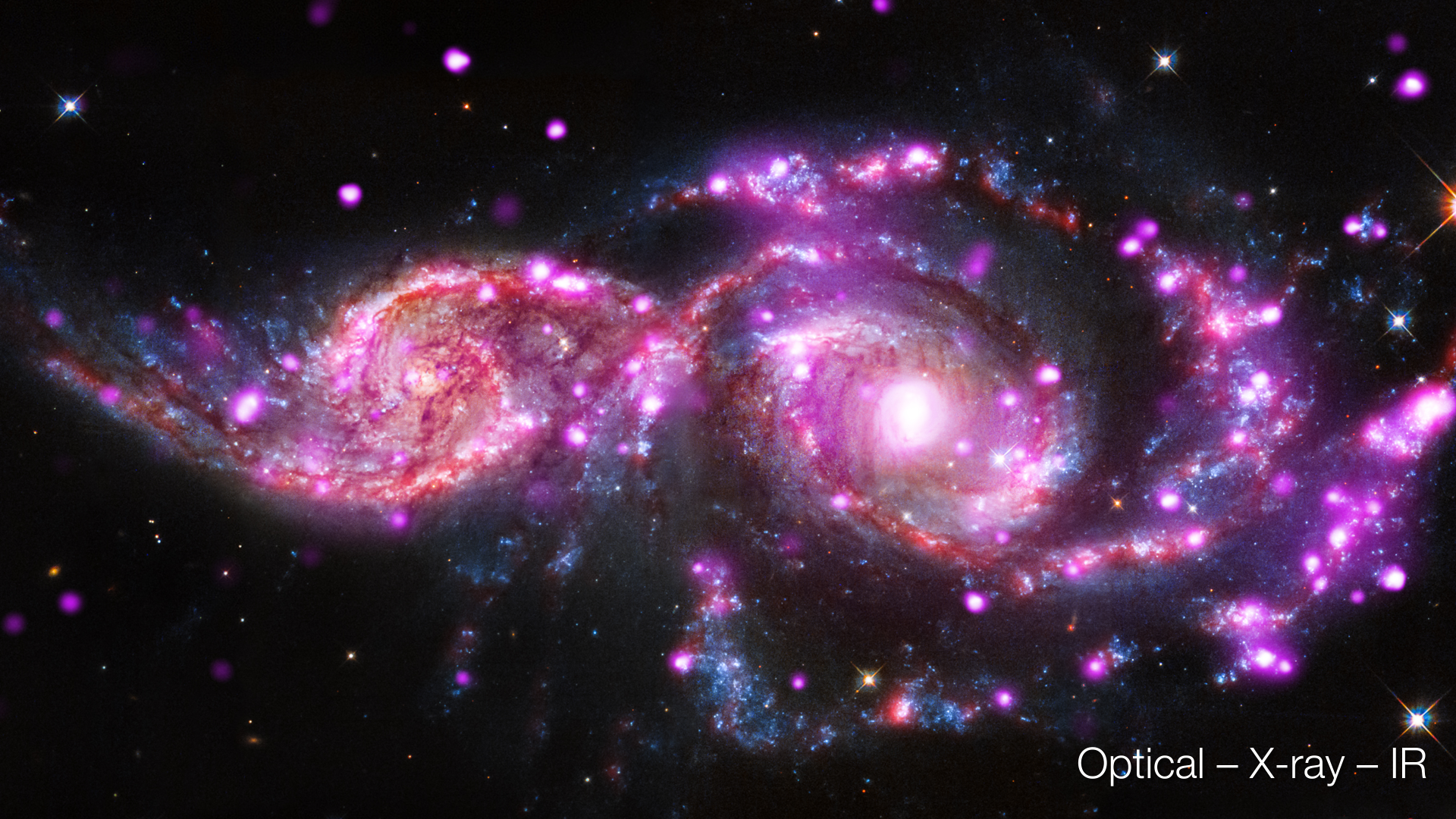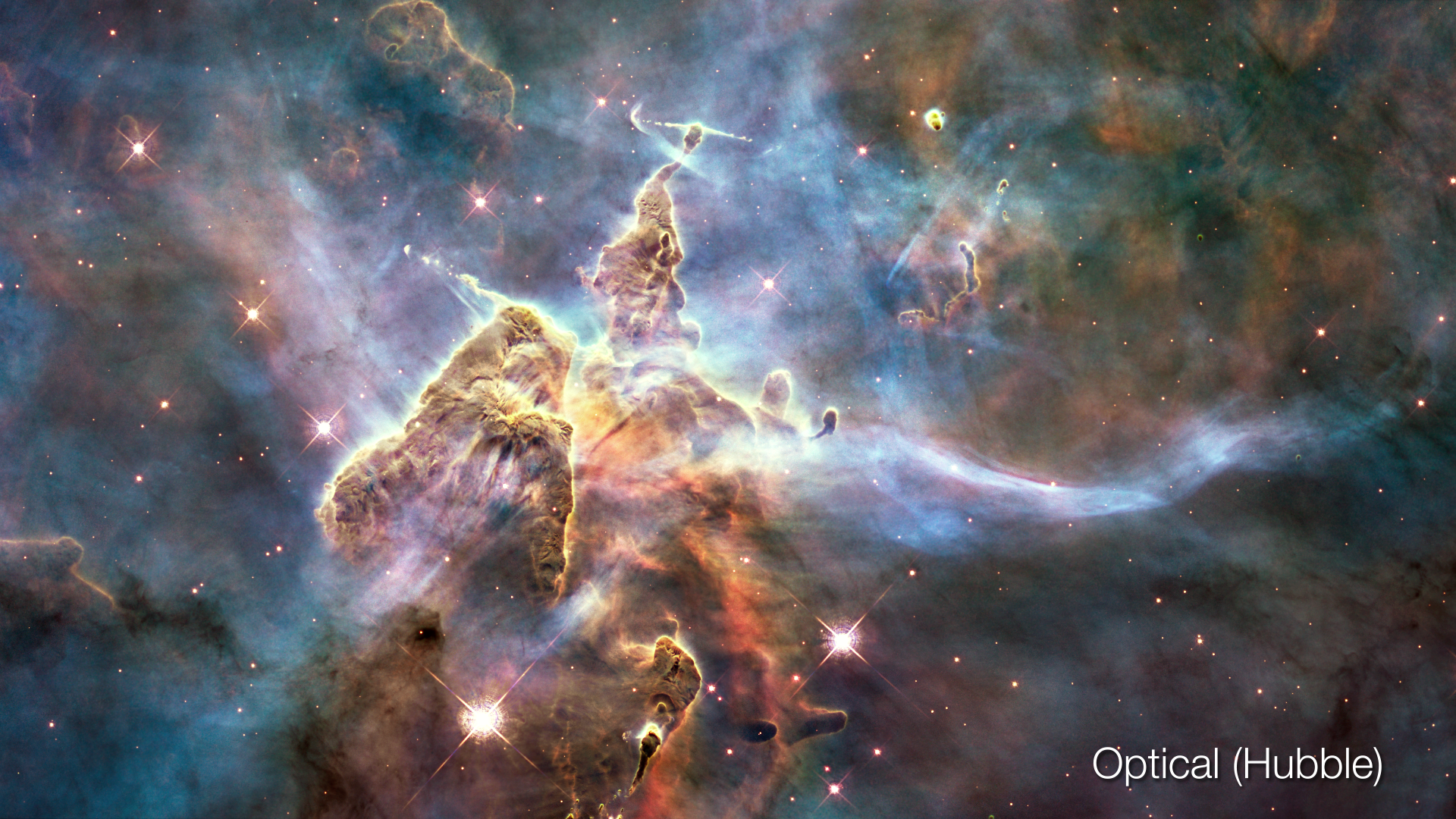CANDELS UDF
This amazingly deep, detailed image is the result of the Hubble Space Telescope’s most substantial and ambitious observing campaign yet, CANDELS—the Cosmic Assembly Near-infrared Deep Extragalactic Legacy Survey. The image displays approximately 30,000 galaxies across 6 billion years of time and space—half the age of the universe—making for a fascinating visual study of galaxy evolution.
This may not look like the Hubble Space Telescope’s most dramatic image, but what you are seeing here is the history of the universe. This ultra deep field (UDF) is not a star field but a field of galaxies, stretching across half the observable universe in both space and time. The oldest and most distant galaxies depicted appear red, because as the universe expands their light has been stretched or “redshifted” to longer wavelengths. Red is the longest wavelength our eyes can see; beyond it are longer infrared wavelengths, which some telescopes, including Hubble, can detect for us.
The brightest spots that appear to have x-shaped beams of light emanating from them are foreground stars between Hubble and the distant galaxies. The x-shaped light is characteristic of Hubble diffraction spikes, which are optical artifacts caused by the mirror support structure in most reflector telescopes.
The image is the result of the CANDELS project—the Cosmic Assembly Near-infrared Deep Extragalactic Legacy Survey, Hubble’s most lengthy and detailed science observation. Gathering all the detailed data to create this image took Hubble 1450 hours, or the equivalent of 60 continuous days of observation.
Credits
Please give credit for this item to:
NASA, ESA, STScI, and the CANDELS team
-
Visualizer
- Greg Bacon (STScI)
-
Technical support
- Leann Johnson (Global Science and Technology, Inc.)
Release date
This page was originally published on Monday, January 28, 2019.
This page was last updated on Monday, July 15, 2024 at 12:22 AM EDT.
Missions
This visualization is related to the following missions:Datasets used in this visualization
-
Cosmic Assembly Near-infrared Deep Extragalactic Legacy Survey (CANDELS) [Hubble Space Telescope: WFC3 and ACS]
ID: 1034CANDELS, the Cosmic Assembly Near-infrared Deep Extragalactic Legacy Survey, is the largest project in the history of the Hubble Space Telescope, with 902 assigned orbits (about two months) of observing time. It was carried out between 2010 and 2013 with two cameras on board Hubble – WFC3 and AC
See all pages that use this dataset
Note: While we identify the data sets used in these visualizations, we do not store any further details, nor the data sets themselves on our site.
